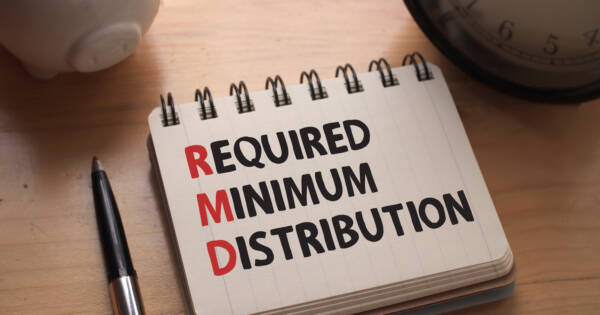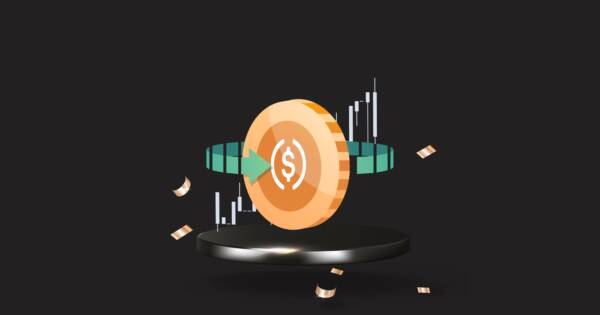One of the ways you can create a good revenue stream is to become involved in income investing. Income investing is all about making solid, relatively safe investment choices that actually produce regular income. This can include interest-bearing investments like bonds and some cash products. It can also include dividend stocks. If you’ve ever wondered how to invest in dividend stocks, read on. We’ll go through the whole process, so you know how to get started and what to expect.
Income and Capital Appreciation
Dividend paying stocks provide regular income to stockholders. They do this by paying out a portion of company profits to shareholders directly. This payout is an extra infusion of cash to shareholders and is based on the number of shares held.
Dividend stocks are popular because they provide the stockholder with regular dividend income. That’s on top of regular capital appreciation — aka the stock price hopefully rising over time. Every dividend period (usually every quarter, but some companies pay monthly, annually, ot even semi-annually), the company announces how much it will pay for each share. So the more shares you own, the more dividends you are paid.
Keep Adding to Accumulate a Larger Portfolio
Unfortunately, most dividend payouts are fairly small. It’s not uncommon to see a quarterly dividend payout of $0.20 a share. If you have 50 shares, for example, you end up with $10 each quarter – or $40 a year. That’s not exactly a large amount of income. However, building an income portfolio of dividend stocks isn’t about making one purchase. It’s a slow build over time.
If you buy more shares, you can receive a bigger payout. Additionally, many companies raise their dividends regularly. One group of dividend stocks (the Dividend Aristocrats) features companies that have increased their dividends every year for at least the past 25 years. Some of the dividend aristocrats have increased their dividend payouts each year for almost 40 years.
This type of payout comes on top of any capital appreciation from the stock. It’s an extra “icing on the cake” that can provide you with increased gains from your investment. At the same time, your nest egg is growing as your holdings (hopefully) see increases in value.
Building Your Dividend Income Portfolio
It’s important to understand, though, that you won’t see significant income payouts at first. Any investment strategy requires a degree of patience. The same is true of a dividend portfolio — especially if you have to start out small. You might only be able to buy 10 shares of something to get started. That payout is only going to be $2 per quarter, if we use the example above.
The key to building a dividend portfolio is to plan to build your income over time. It can take ten years (or more) to build your dividend income portfolio when you start from scratch. However, if you’re persistent, you can eventually build up a solid portfolio. A good place to start is with a dividend index fund. It will give you some instant diversity. As you begin building assets with your dividend fund, you can use future gains to branch out and purchase individual dividend stocks.
 Shutterstock
ShutterstockBe Realistic with Dividend Investing
One of the problems with dividend investing is that many people have unrealistic expectations about their returns. Building an income portfolio is the work of years — decades even. It can take up to ten (or more) years to build up your income portfolio that gives you an income that’s significant enough to matter. It’s all about planning ahead.
So, if you’re trying to hit a home run and get rich quickly with dividend investing, then this investment strategy likely isn’t for you. Stick to gambling on meme stocks. However, if you want to build wealth over time, then dividend investing can be a great way to have your portfolio throw off income every few months. Ready to get started? Here are two ways to help increase your share count as you get started.
Invest Consistently
Dollar-cost averaging is one of the most effect investing tool for most “regular” folks. Consistently invest in your dividend portfolio to buy a few shares each month. You can even buy partial (or fractional) shares these days, so there’s really no excuse to have idle cash lying around.
If you keep adding to your pot, it’s quite possible that you could amass a significant number of shares in a few years. If the dividends are raised consistently, you could eventually end up with a decent payout each quarter.
DRIP Plans
Another great strategy is to use Dividend Reinvestment Plans (DRIPs) during the building phase. DRIPs will automatically reinvest your dividend earnings back into the fund or stock for you. That means you’re buying more shares every time you receive a dividend. As the extra shares add up over time, it’ll contribute to your total dividend payout.
It’s like a snowball that just gets bigger and bigger. The more shares you have, the higher the dividend. The higher the dividend, the more shares the DRIP plan will buy for you when there’s a dividend payout. This just snowballs into even more dividends next time around and the cycle repeats. DRIPs can be a great way to boost your share purchases automatically. At some point, when the dividend payouts are significant enough, you can turn off the DRIP and collect the dividends as quarterly income instead.
Don’t Set It and Forget It
You do need to be careful, though. Remember there is always the risk of losses when you invest. For example, General Electric (GE) was a great dividend stock for decades until they ran into trouble in the early 2000s. It wasn’t pretty for GE investors. After 20 years of growth, they saw the share price fall from a high of $440 (split adjusted) in 2000 to just $104 today.
It’s also important to understand that companies can cut dividends whenever they wish. Worst, they can suspend payments altogether. Many thought the worst for GE dividend investors was over when the company decided to cut its dividend by two-thirds in 2009. However, they basically eliminated the dividend altogether in 2018 when they decided to declare a $0.01 a share dividend.
Can you imagine holding on as a GE investor and hoping for a bounce back? It wouldn’t have ended well for you. Obviously, not every company runs into trouble like this. There are plenty of companies with a strong history of paying dividends. Truthfully, the trouble that leads to a dividend cut is years in the making. That’s why you need to be an intelligent investor. Watch all of your investments, but especially when you are dividend investing. It’s certainly not a set it and forget it strategy.
How Do You Start Without a Ton of Money?
I’ve spoken with quite a few people who want to start investing in dividend stocks, but decided not to because they didn’t want to deal with learning how to properly assess each stock. Don’t worry. There’s a solution for that.
They also didn’t think the modest amount of money they had to invest would be worth the hassle (or the returns). However, there’s a less risky way to invest in dividend stocks — even if you are a beginner or don’t have a huge chunk of cash to invest up-front. Simply find yoursef a dividend index fund.
Dividend Index Funds
If you know me at all, it should be no surprise that I would recommend a dividend investing strategy that involves indexing. (You didn’t think I’d be stock-picking, did you?) There are plenty of dividend index mutual funds and dividend index ETFs out there. These investments are low-cost, usually with low fees. In some cases, depending on where you purchase your shares, you might be able to avoid paying transaction fees at all.
Not only are dividend index funds inexpensive, but it’s possible to start investing in them with a relatively small amount of money. Nowadays, you can open a brokerage account with no minimum and start investing in a dividend index fund right away. It’s one of the best ways to get started.
Here’s an Example of How You Invest to Build Wealth Over Time
Remember how I said that you need to consistently invest? If you invest a set amount of money every month, your money buys as many shares (or partial shares) as possible. So if a share of an index fund costs $100 and you invest $100 each month, you buy one share. Of course, during months when the market is struggling, the price will go lower.
Now let’s say the price of the fund went to $50. Most people would be upset that the value of their invest dropped in half. However, your automated buy will now actually be able to purchase two shares. Later, when the price bounces back, your bottom-line benefits because you have a larger number of shares because you bought when prices were lower.
Over time, the market always tends to gain. While there is always the possibility that the market will lose someday and never recover, that has yet to happen — through multiple financial crises and a global pandemic, the market has never failed to bounce back eventually.
 Shutterstock
ShutterstockAdd in the Dividends
Let’s not forget about the dividend payouts themselves. Let’s say you sign up for the dividends to reinvest via a DRIP. The dividend fund pays out, say, 4% per year of the fund price. This means that every three months, you’ll get about $1 per share. As you reinvest your dividends and keep using dollar cost averaging to buy more shares, your dividend payouts increase because you have a higher number of shares. The cycle repeats itself over time, helping you build up the stash.
Dividend paying companies tend to increase their payouts over time. Assuming you keep up with the consistent investing schedule of $100 a month, a capital appreciation rate of 7% a year with the dividend growing at 3% a year, your $100 a month contribution will grow into a pot with over $18,000 in one decade and over $63,000 in two.
The kicker is that by then, your portfolio will be throwing off over $1,200 in income a year — a number that will continue to grow. This is with only investing $100 a month. Imagine what you can do with even a little bit more!
The Bottom Line
In the end, there’s no need to pick individual stocks or come up with a large amount of capital to start as a dividend investor. You can start with a relatively small amount of money and use index funds to reduce your risk. As long as you are consistent, you will be surprised at how much wealth you can build over time.
You just need to recognize that this investment strategy isn’t a fast way to easy riches. Building a good income portfolio with dividend stock or funds takes time. Make a plan and consistently invest. Add DRIPs into the equation and you’ll build up a portfolio that provides you with regular income you can count on over time.








